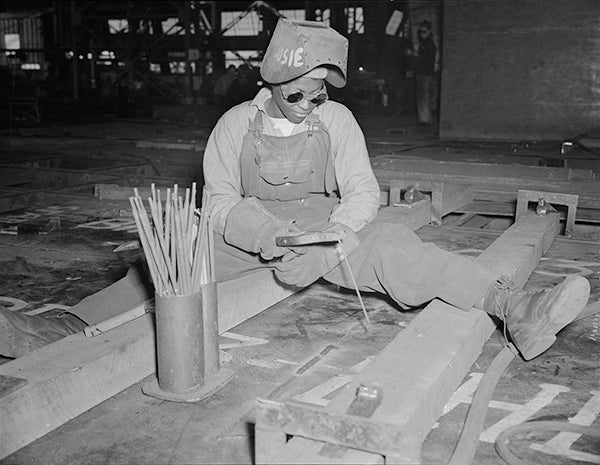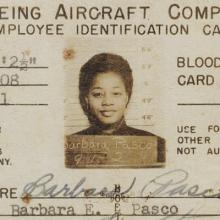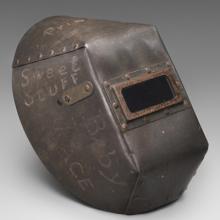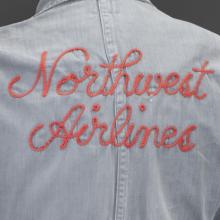Rosie the Riveter: Womanpower in Wartime
Rosie the Riveter: Womanpower in Wartime
The Second World War had a profound impact on working women in American society. After the United States entered the war on December 7, 1941, millions of men left manufacturing jobs for military service and recruiters scoured the country in search of replacements. Women joined the workforce in record numbers and filled industrial positions previously denied to them. Migrating from diverse regions and cultures, women converged on the nation’s industrial centers and quickly learned skills that traditionally took years to master. Popular culture and propaganda launched the legend of “Rosie the Riveter,” the anonymous, bandanna-clad woman in coveralls who produced all manner of wartime equipment on the home front. An empowering icon of determination, Rosie the Riveter proved to a generation of Americans that women could excel in any job offered to them.
 In 1940, approximately twelve million women were employed in the United States. While some women made reasonable wages as teachers, nurses, and other professionals, most worked in low-paying jobs as domestics, clerks, waitresses, seamstresses, and other gender-stratified positions. These hard-working women, especially those recovering from the Great Depression, jumped at the chance to make significantly higher pay in wartime manufacturing. When the demand for labor outpaced supply, companies and government entities recruited students, recent graduates, and middle-class homemakers. Advertisements seemed to appear everywhere. Propaganda posters featured patriotic themes and glamorized imagery in an effort to influence women to join the workforce. More than sixteen million women were employed at the peak of wartime production in 1944—with over three million in skilled factory positions to support the massive increase in war-related industries.
In 1940, approximately twelve million women were employed in the United States. While some women made reasonable wages as teachers, nurses, and other professionals, most worked in low-paying jobs as domestics, clerks, waitresses, seamstresses, and other gender-stratified positions. These hard-working women, especially those recovering from the Great Depression, jumped at the chance to make significantly higher pay in wartime manufacturing. When the demand for labor outpaced supply, companies and government entities recruited students, recent graduates, and middle-class homemakers. Advertisements seemed to appear everywhere. Propaganda posters featured patriotic themes and glamorized imagery in an effort to influence women to join the workforce. More than sixteen million women were employed at the peak of wartime production in 1944—with over three million in skilled factory positions to support the massive increase in war-related industries.
Driven by necessity and patriotism, women worked in essential roles with newfound pride and determination. Rationing, childcare, and overcrowding added to the strain of long shifts, extended workweeks, and round-the-clock production schedules. Millions of women were introduced to working two shifts—one on the job, and the other at home. For those who served dual roles before the war, defense industry work suggested a brighter future. Countless women formed career aspirations, yet as the war wound down, jobs were eliminated or relinquished to men who returned from military service. Generally excluded from industrial work in the postwar boom, lasting change for most women was not immediate. However, Rosie the Riveter had paved the way for an ongoing struggle towards equality. Phyllis Gould, a welder at the Kaiser Shipyards in Richmond, California, remarked of her wartime experience, “from that point on I always thought I can do anything I want to do. If I set my mind to it, I can do anything. And that's how I've lived the rest of my life.
 A very special thank you to the National Park Service, Rosie the Riveter/World War II Home Front National Historical Park, for making this exhibition possible, and to the Richmond Museum of History and Culture, and San Francisco State University, Labor Archives and Research Center.
A very special thank you to the National Park Service, Rosie the Riveter/World War II Home Front National Historical Park, for making this exhibition possible, and to the Richmond Museum of History and Culture, and San Francisco State University, Labor Archives and Research Center.
Watch our exhibition video to see more images of women defense workers during World War II and to hear the 1942 hit song “Rosie the Riveter.”
[image top of page]
Woman working on an airplane motor June 1942
Alfred T. Palmer (1906–93) | Office of War Information
North American Aircraft, Inc., Inglewood, CA
Courtesy of the Library of Congress, Prints and Photographs Division
R2024.0705.001
[inset images]
McDonnell Aircraft uniform, Bertha Johanna Brinker Ray 1944–45
The Hinson Manufacturing Co., Waterloo, IA
Courtesy of the National Park Service, Rosie the Riveter/WWII Home Front National Historical Park
RORI 708; L2024.0701.070a–b
Do the job HE left behind 1943
Robert George Harris (1911–2007) | Office of War Information
Courtesy of Stanford University, Hoover Institution Library & Archives
R2024.0710.002
Welder-trainee Josie Lucille Owens helping to construct the Liberty Ship
SS George Washington Carver 1943
Emmanuel Francis (E.F.) Joseph (1900–79) | Office of War Information
Kaiser Shipyards, Richmond, CA
Courtesy of the Library of Congress, Prints and Photographs Division
R2024.0705.009
@SFOMuseum
#RosieTheRiveterSFO
© 2024 by San Francisco Airport Commission. All rights reserved.






